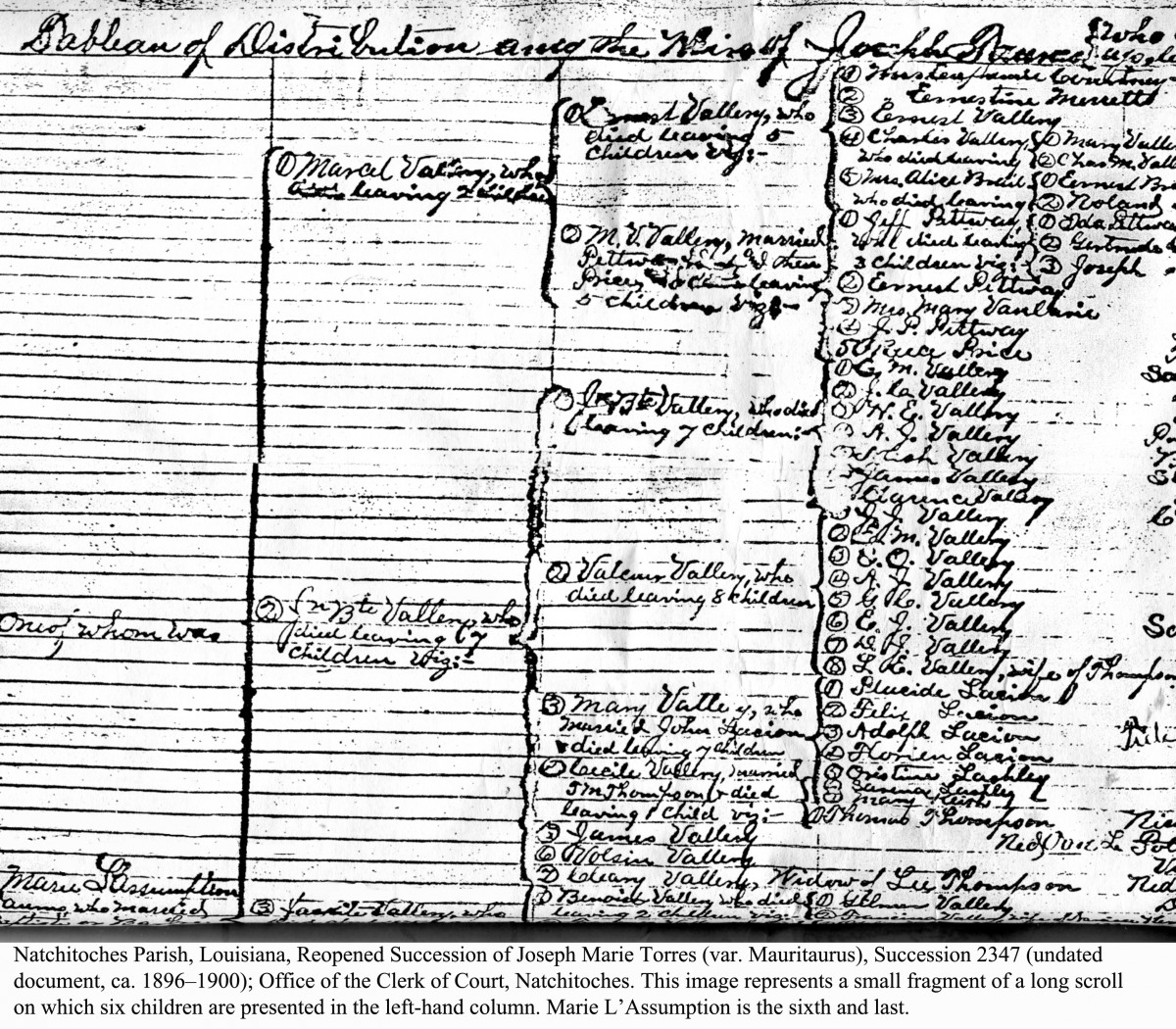14 May 2014
Laws of heirship, across time and place, have generally dictated estate divisions by either "per capita" or "per stirpes." The jurist Henry Campbell Black has defined the differences this way:*
PER CAPITA
"By the heads or polls; according to the number of individuals; share and share alike. This term, derived from the civil law, is much used in the law of descent and distribution, and denotes that method of dividing an intestate estate by which an equal share is given to each of a number of persons, all of whom stand in equal degree to the decedent, without reference to their stocks [i.e., lines of descent] or the right of representation. It is the antithesis of per stirpes."
PER STIRPES
"By roots or stocks; by representation. This term, derived from the civil law, is much used in the law of descents and distribution, and denotes that method of dividing an intestate estate where a class or group of distributees take the share which their deceased would have been entitled to, taking thus by their right of representing such ancestor, and not as so many individuals.
QUESTION:
Does the attached image, from a reopened succession in the civil-law state of Louisiana, represent per capita or per stirpes inheritance?
*Henry Campbell Black, Black's Law Dictionary: Definitions of the Terms and Phrases of American and English Jurisprudence, Ancient and Modern with Guide to Pronunciation, 4th ed. (St. Paul, Minn.: West Publishing Co., 1951), 1292, 1294.

Per Stirpes question
What I am seeing is the tracking of descendants. Though there is not birth and death information it does have a consistent note "died leaving X children." This specific note would really be unnecessary if you where making a per capita distribution of the assets. It is an important distinction when dividing assets per stirpes. Another possible clue is all of the descendants are numbered with a circle around the number.
When using a per stirpes division, it is usually important to know the death date. If someone of a specific generation predeceased the descendant then the rest of their line would probably be excluded from the inheritance. I believe this is explained in the definition of Black’s Law.
One other clue here is the jurisdiction. Louisiana was settled by the Spanish and the French. When purchased from France in 1803 the United States government agreed to allow the French settlements to use their current form of law which was civil law. The Civil Code of Louisiana is still the law today.
My answer is, this document accounts for the descendants of Joseph Marie Torres for a per capita distribution.
I think it is per stirpes too
I think it is per stirpes too. If it had been per capita, I would have expected to see continuous numbering instead of starting again at 1 for each stake.
per capita vs. per stirpes
I'm not so sure this document details which one would rule in this case. If it were per stirpes, then the estate would have been equally divided three ways and then split among descendants. The descendants of child 3 would get a larger share than the others because there were fewer descendants in that group.
If it were per capita, then the estate would be equally split between the individuals within three generations of descendants.
I believe it would be more important to find out what the laws of estate division for Louisianna stated were at that time.
Debra, you've pegged the most
Debra, you've pegged the most-important point: We have to check the law of the specific time and place. As several of you surmised, here and on Facebook, it is a per-stirpes division. If it had been per-capita, there would have been no need at all to chart out descendants; the attorney could simply have drafted a list of heirs and then divided the proceeds evenly according to the number of heirs.
In this case, there were two other columns that could not be copied because of the width of the scroll. (Hidden lesson here: Part of the last visible column was intentionally not showing, to see if anyone would comment upon that flawed photocopy and question what else might be there.) The penultimate column that was not shown at all was a numbered list of all heirs: 190 numbered heirs, with some of them being further divided into a,b,c,d,e,f,i,j. There were over 200 heirs in all.
The last column, also left off the photocopy, was the amount paid to each heir. Those amounts ranged from $58.15 to $.32. Notice the Lucien-Lashley-Kirk siblings. They were 7 heirs to their mother Mary Vallery, who was one of 7 heirs of her father Jean Baptiste Vallery Jr., who was one of 6 heirs of his mother Marie L'Assumption Taurus, who was one of 6 progeny-bearing children of "Joseph Taures who died many years ago"—the man whose reopened succession is being discussed. Therefore, the Lucien-Lashley-Kirk siblings each inherited one-seventh of one-seventh of one-sixth of one-sixth of the proceeds.
Math! Even in historical research, we can't escape it!